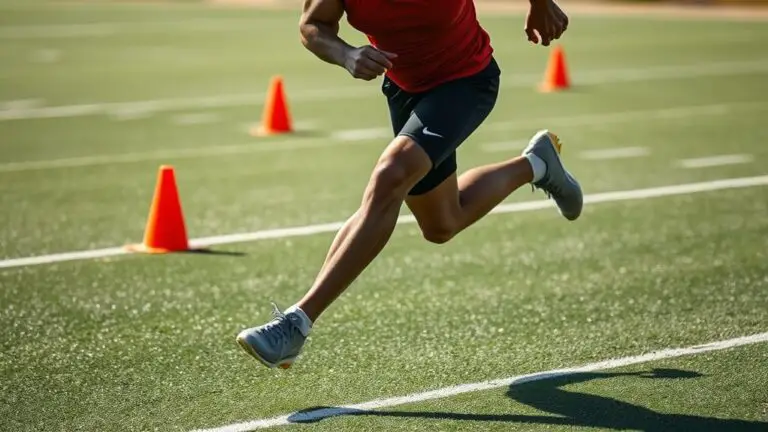How to Train With Altitude Masks for Endurance
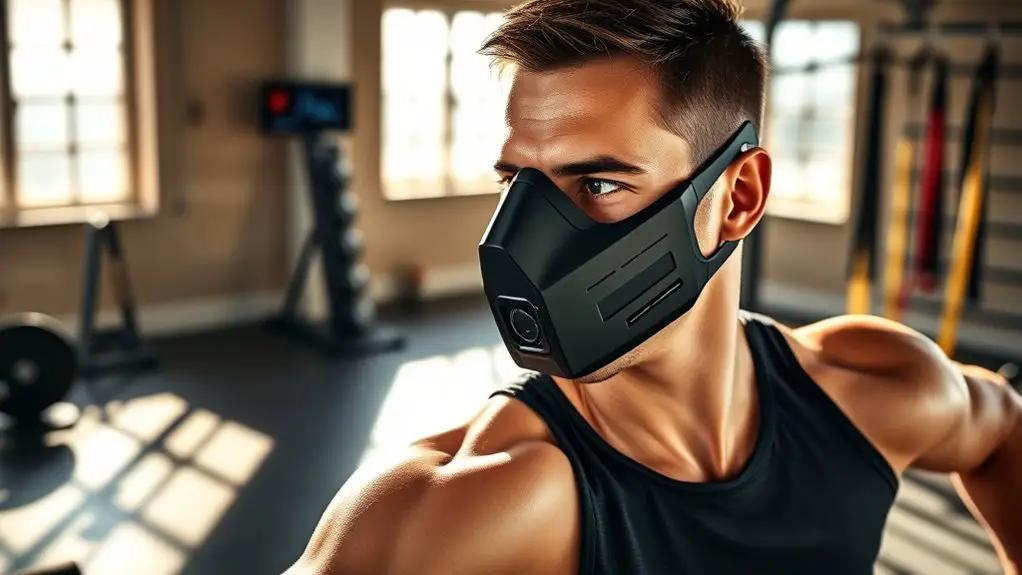
To train with altitude masks for endurance, start by selecting a mask that fits comfortably and suits your fitness goals. Integrate it gradually into your workouts, beginning with moderate-intensity sessions to adapt your respiratory system. Use interval training and steady-state runs to enhance cardiovascular efficiency. Monitor your heart rate and perceived exertion to guarantee safe progression. Make adjustments to your training as needed, and stay hydrated. You might uncover even more effective strategies as you continue exploring this topic.
Understanding Altitude Masks and Their Benefits
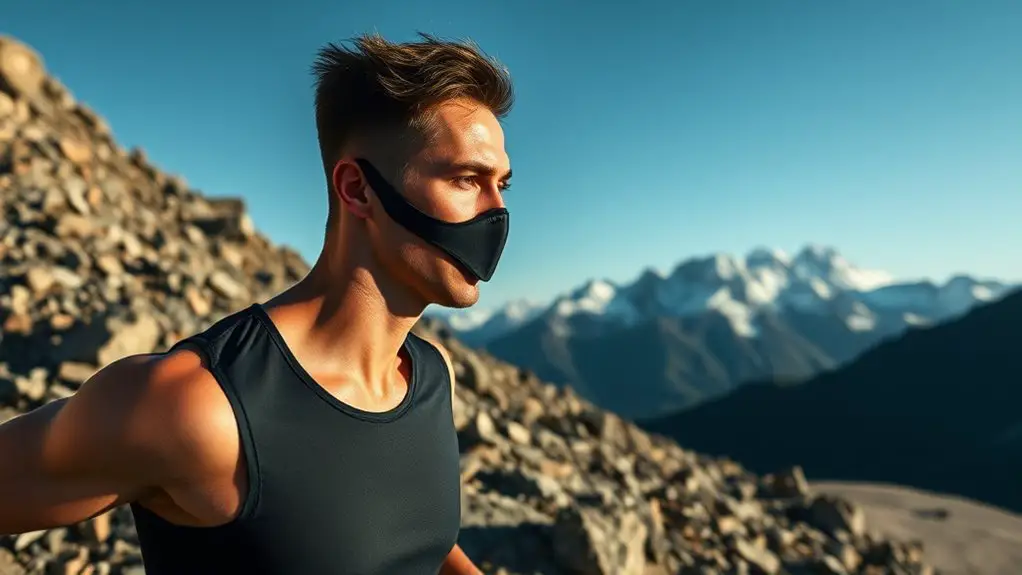
Although altitude masks have gained popularity among athletes and fitness enthusiasts, their effectiveness and benefits are often debated. A benefits overview reveals that these masks simulate high-altitude conditions by restricting airflow, which can lead to increased respiratory muscle strength and heightened cardiovascular efficiency. Many claim that using an altitude mask enhances performance by improving your body’s ability to utilize oxygen more effectively during strenuous activities.
Research suggests that training with altitude masks may enhance endurance and increase stamina, particularly for those engaged in high-intensity workouts. However, it’s essential to take into account that the actual performance enhancement can vary widely among individuals. Some studies indicate that the benefits may be modest compared to traditional altitude training. Ultimately, understanding the science behind altitude masks can help you make informed decisions about incorporating them into your training regime, ensuring that you maximize any potential gains while remaining aware of their limitations.
Choosing the Right Altitude Mask for Your Needs
When selecting an altitude mask, it’s essential to take into account both the fit and comfort, as a well-fitted mask enhances your training experience and minimizes distractions. Additionally, you’ll want to evaluate the resistance level options available, since different levels can cater to your specific fitness goals and respiratory capacity. By focusing on these factors, you can guarantee that the mask you choose effectively supports your training regimen.
Mask Fit and Comfort
Finding the right altitude mask is vital for optimizing your training experience, as a poor fit can hinder both performance and comfort. Different mask types offer varying levels of adjustability and comfort, so it’s important to conduct a thorough fit assessment before making a choice. A well-fitted mask should sit snugly against your face without causing excessive pressure or discomfort. Pay attention to the material and design; lightweight, breathable fabrics can enhance comfort during extended use. Additionally, consider the mask’s size options to find one that accommodates your facial structure effectively. A proper fit guarantees that air resistance is managed correctly, allowing you to focus on your endurance training without distractions from an ill-fitting mask.
Resistance Level Options
As you consider incorporating an altitude mask into your training regimen, understanding the various resistance level options is essential for maximizing your performance benefits. Altitude masks typically offer multiple resistance levels, which can be adjusted to match your training intensity. Lower resistance levels simulate easier conditions, allowing you to build foundational endurance without overly taxing your system. Conversely, higher resistance levels increase difficulty, providing a more strenuous workout that can enhance your oxygen utilization and cardiovascular efficiency. Evaluate your current fitness level and training goals to select the appropriate resistance level. Gradually increasing resistance as your fitness improves can help avoid injury while promoting peak performance gains. Always listen to your body and adjust accordingly for best results.
Proper Usage and Fit of Altitude Masks
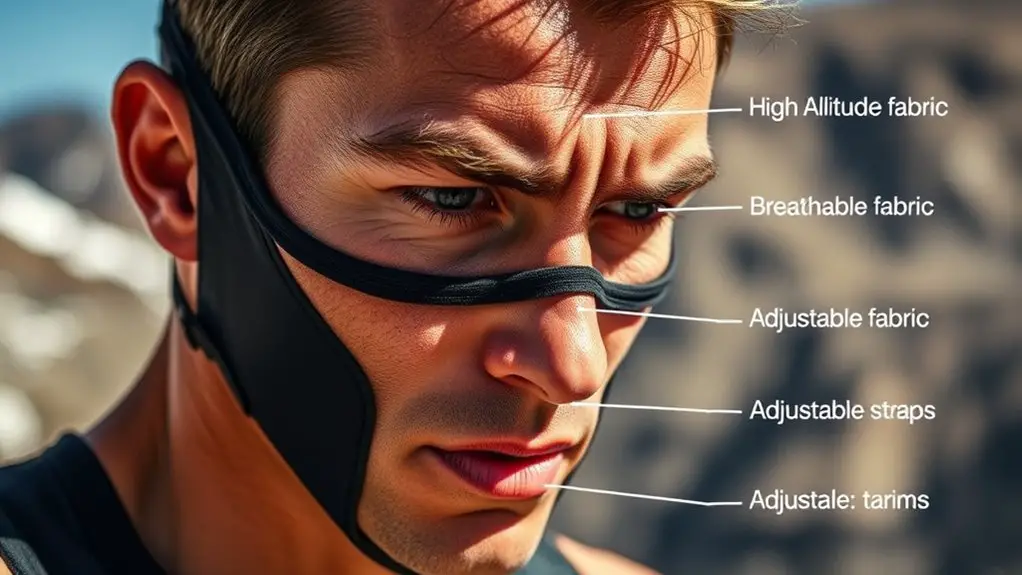
When using altitude masks, selecting the right size is essential for maximizing performance and comfort. A proper seal not only enhances the mask’s effectiveness but also prevents air leaks that can undermine your training. Additionally, adjusting the mask for comfort can greatly impact your ability to maintain focus and intensity during workouts.
Selecting the Right Size
Selecting the right size for your altitude mask is essential, since an improper fit can greatly undermine its effectiveness. To guarantee peak performance, you’ll need accurate size measurements of your face. Most brands provide sizing charts based on these measurements, helping you find the best fit. Pay attention to the different mask materials, as they can influence both comfort and performance. A mask made from breathable, flexible materials will conform better to your face, reducing gaps that could impact airflow. Additionally, consider any adjustable features that can accommodate slight variations in size. Remember, a well-fitted mask not only enhances your training but also maximizes the benefits of simulated altitude exposure, ensuring you get the most out of your workouts.
Ensuring Proper Seal
Achieving a proper seal with your altitude mask is essential for optimizing its performance during training. A well-fitted mask enhances seal integrity, preventing air leaks that can undermine your workout’s effectiveness. Regular mask maintenance is vital; inspect the mask for wear and tear, ensuring all components function correctly.
| Component | Importance | Maintenance Tips |
|---|---|---|
| Mask Straps | Secure fit | Adjust for tightness |
| Face Cushion | Comfort and seal | Clean regularly |
| Air Valve | Controlled airflow | Check for blockages |
Adjusting for Comfort
Finding the right fit for your altitude mask can greatly enhance your training experience. To guarantee peak performance, focus on comfort adjustments, as a poorly fitting mask can hinder your breathing and concentration. Start by selecting mask materials that are breathable yet durable, like neoprene or silicone, which offer flexibility and comfort. Adjust the straps to achieve a snug fit without causing discomfort. It’s vital that the mask doesn’t shift during movement, as this can disrupt airflow. Test the mask during warm-ups; if it feels restrictive, consider size adjustments or different models. Regularly reassess the fit, especially as you adapt to higher resistance levels, making sure your mask remains an asset rather than a burden during endurance training.
Effective Workout Strategies With Altitude Masks

While many athletes seek to enhance their performance through various training methods, incorporating altitude masks can offer a unique edge by simulating high-altitude conditions. To effectively utilize these masks, start by integrating them into your endurance training routines gradually. Begin with moderate-intensity workouts to adapt to the increased respiratory demands, employing altitude acclimatization techniques to optimize your body’s response.
Consider interval training sessions, alternating between high-intensity bursts and recovery periods, which can enhance oxygen efficiency while wearing the mask. Mixing in longer, steady-state runs can also help improve your aerobic capacity over time. Aim for a frequency of three to four sessions per week, ensuring you allow for recovery to prevent overtraining. Ultimately, by strategically incorporating altitude masks into your regimen, you can boost your endurance and adapt to challenging conditions, setting yourself up for improved performance on race day.
Monitoring Progress and Adjusting Your Training
As you incorporate altitude masks into your training regimen, it is crucial to monitor your progress closely to guarantee ideal adaptation and performance gains. Progress tracking helps you identify strengths and weaknesses, allowing for informed training adjustments.
| Metric | Initial Value | Current Value |
|---|---|---|
| VO2 Max (ml/kg/min) | 40 | 45 |
| Time to Exhaustion | 30 minutes | 40 minutes |
| Recovery Heart Rate | 120 bpm | 100 bpm |
Regularly record these metrics to visualize improvements and make necessary adjustments. If you notice stagnation, consider altering your workout intensity or duration. Incorporating interval training can also enhance your oxygen efficiency. By consistently evaluating your performance, you can optimize your altitude training strategy, ensuring you’re on track toward your endurance goals. Remember, flexibility in your training approach is key to revealing your full potential.
Safety Considerations When Using Altitude Masks
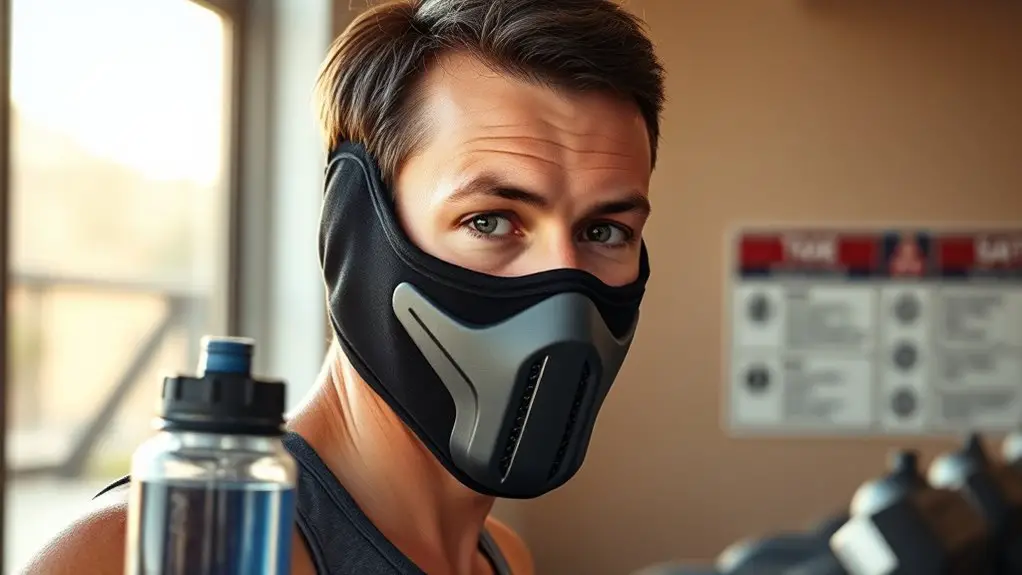
Using altitude masks can considerably enhance your training, but it’s important to approach their use with caution. While these masks simulate high-altitude conditions, they can pose health risks if not used properly. First, make sure you’re in good health; consult a physician if you have respiratory or cardiovascular issues. Start with shorter sessions, gradually increasing the duration to allow your body to adapt. It’s essential to monitor your heart rate and perceived exertion levels, as overexertion can lead to hypoxia, dizziness, or fainting. Always stay hydrated, as altitude training can exacerbate dehydration. Additionally, consider training in a controlled environment initially, rather than outdoors, to minimize variables. Finally, be aware that altitude masks aren’t a one-size-fits-all solution; individual responses vary. By taking these training precautions, you can maximize the benefits while minimizing potential risks.
Frequently Asked Questions
Can Altitude Masks Help With Weight Loss or Fat Burning?
Altitude masks might enhance caloric expenditure during workouts, as they simulate higher altitudes, which can challenge your body. This stress may lead to a metabolism boost, potentially aiding in fat burning. However, the impact on weight loss is minimal without combining proper diet and exercise. While they can help improve endurance, relying solely on altitude masks for fat loss isn’t effective. You’ll need a thorough approach to achieve significant results.
How Often Should I Train With an Altitude Mask?
Studies suggest that training with an altitude mask can improve VO2 max by up to 20%. For ideal results, you should aim to incorporate the mask into your routine 2 to 3 times a week. This frequency allows your body to adapt while maximizing altitude mask benefits. Gradually increase the duration as your endurance improves, ensuring you’re not overtraining. Listen to your body; recovery is just as important as the training itself.
Will Altitude Masks Improve My Overall Fitness Level?
Altitude masks can enhance your overall fitness level by simulating high-altitude conditions, which may improve your cardiovascular efficiency and oxygen utilization. While evidence suggests they can offer fitness benefits, the effectiveness largely depends on your training techniques and how consistently you incorporate them into your regimen. However, it is crucial to combine altitude training with a well-rounded fitness program to maximize benefits and avoid potential drawbacks from improper use.
Can I Wear an Altitude Mask While Running Outdoors?
Yes, you can wear an altitude mask while running outdoors. However, the mask’s effectiveness in mimicking high-altitude conditions is debated. Some studies suggest that it may enhance respiratory muscle strength, but the benefits for endurance training are less clear. When you run outside, make sure you’re still getting enough oxygen, as the mask could limit airflow. Balancing your workout intensity with the mask’s resistance is vital for maximizing potential benefits.
Are There Any Age Restrictions for Using Altitude Masks?
You might think altitude masks are only for seasoned athletes, but age considerations are important for anyone interested in using them. Generally, there aren’t strict age restrictions, but young users should consult with a healthcare professional first. Safety precautions are critical; children and adolescents may not yet have fully developed respiratory systems. It’s important to confirm that any training method suits your individual health and fitness level to maximize effectiveness while minimizing risks.




